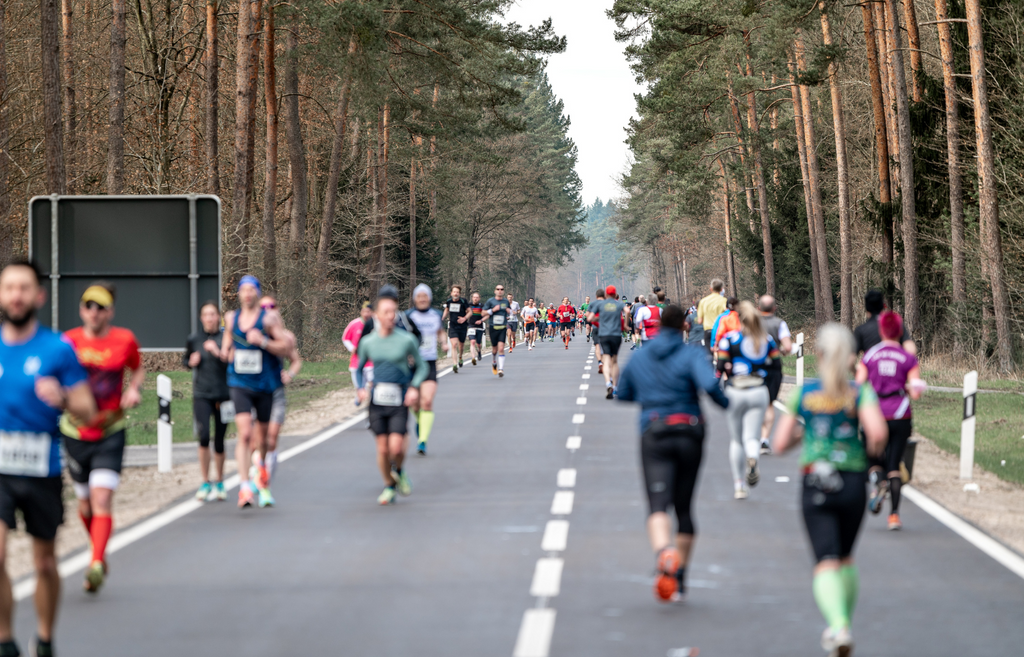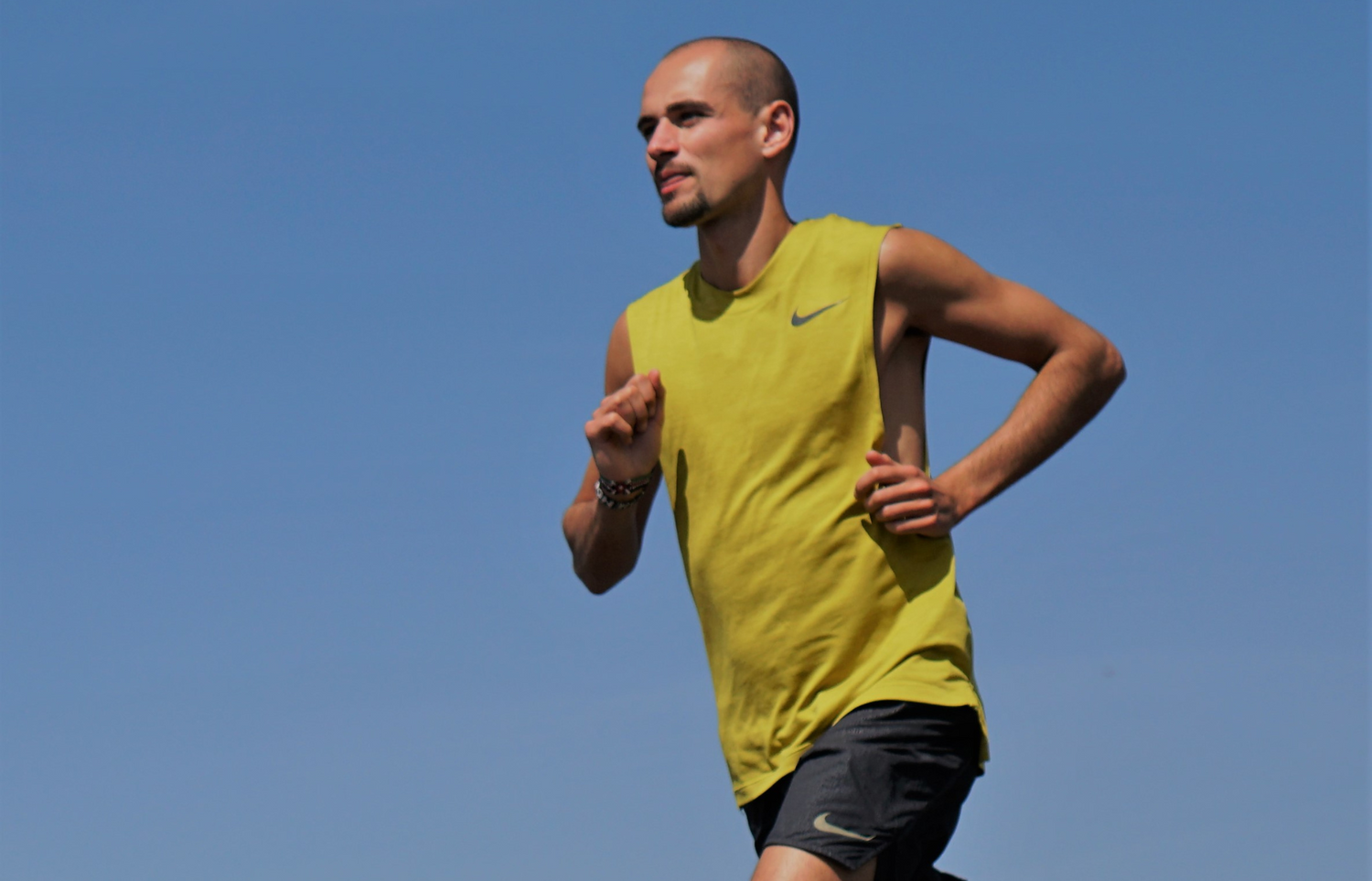"A central insight that I have gained over the course of my sports career and that I share with many professional runners is that consistency in training forms the basis for new best times. I have usually celebrated my greatest successes after solid and at first glance unspectacular training blocks with consistently high volumes. No glitz and glamour, but - as they say in the Ruhr region - real “maloche”. But, in my opinion, managing this smoothly and injury-free over a longer period of time is a much greater challenge than delivering high-quality workouts selectively."
The reason: Sometimes it's really hard to pull yourself together. Especially in phases when you are already tired and irritable or the external conditions are adverse, the temptation to put your feet up and only accelerate the day after is great. To put it in the words of the former 10,000 meter European champion Jan Fitschen: “Running is simple, but not always easy.” Because it is largely a matter of the head - this experience was brought home to me in full force in the Corona year 2020 led when the sport weighed heavily on my motivation. In my opinion, we should therefore pay just as much attention to our mental freshness and motivation as we do to training, regeneration and injury prevention.
In order to do justice to all areas as best as possible, I have built up a routine over the course of my many years of training as a running professional that has proven itself."

1. Give Yourself Variety
The oft-invoked “loneliness of the long-distance runner” is so legendary that a well-known book by Alan Sillitoe has already been dedicated to it. It is a blessing and a curse at the same time. On the one hand, there is something calming and almost meditative about it. There are days when it creates an incomparable flow feeling, running alone through remote forests in all weathers and completely resting within yourself. But the very next day, the same route that you know inside and out can start to annoy you.
My antidote: variety of routes! Training doesn't always have to start right on your doorstep. It's worth training on changing routes and constantly exploring new places. With the help of Google Maps, I have discovered many new routes that are now part of my permanent repertoire. I can choose from five different routes within a 20 kilometre radius of my home. Some are very flat, asphalted and particularly suitable for brisk runs. Others are more profiled, with soft ground and particularly beautiful scenery, making them ideal for relaxed, long runs. I often decide shortly beforehand based on my gut instinct which route I would like to do the most for the upcoming training session.
Changing routes with soft surfaces are an enormous help, especially for runners who cover a large number of kilometres, and varying route profiles with one or two mountains contribute to their running development. Since my first stay in Iten, Kenya - the hilly runner's paradise and home to numerous world-class athletes - I have consciously incorporated as many metres of altitude into my runs as possible.
When I'm out and about without my training partners or cycling companion, I primarily use music, podcasts and radio plays as a distraction. Especially in the dark season, an exciting radio play can work wonders while running and turn a rather reluctant run into a little adventure. It is also important to vary the acoustic accompaniment. I often notice that my music playlist is overheard after two weeks and then ends up annoying me rather than enriching my run. The playlist should then be changed to the latest. Variety is key!

2. Training is more than just the running time
The importance of preparation and follow-up to training is quickly underestimated and the risk of injury increases dramatically if you neglect it, especially in cool conditions. Warming up before tempo runs and carefully progressing into endurance runs are part of my training routine. The following applies: the faster you run, the better your body should be warmed up. For tempo intervals and endurance runs in the competition speed range, I separate the warm-up from the actual exercise time and add stretching and coordination exercises, while for long runs or moderate endurance runs I start at a slow pace and only reach my actual training speed after a few kilometers. Thanks to the special attention given to warming up before intensive sessions, I achieve another effect in addition to optimally preparing my body for high speeds: I automatically take the intensive key session even more seriously and approach the exercise with the right mindset.
I take a lot of time following up on training, especially after tempo runs or longer endurance runs after which my muscles become very tense. First of all, I make sure not to abruptly stop training sessions. After tempo intervals, a short run of one to two kilometers is recommended, while for endurance runs I let the last kilometer coast down. I then had excellent experiences with applying heat to the muscles as quickly as possible in order to nip cramps in the bud - be it with a hot shower or bathtub or going to the sauna. With this feeling of warmth, I then go for extensive stretching, for which I take three quarters of an hour at least four times a week. After running many kilometers during marathon training, the back thigh muscles in particular tend to shorten.

3. Create an environment and a community
Runners are considered lone fighters and individualists – which seems plausible at first glance. Because they usually pursue personal goals in their sport; be it a new personal best, completing a certain distance, looking good or doing something for your health. Sociability and the fun of running together often fade into the background as a motive in public perception, not least because the boom in modern tracking apps and GPS watches means that even more attention is paid to the “naked” numbers of training evaluation. But it's amazing how crucial good teamwork is, especially for the kings of numbers: professional runners.
In elite sport, where the competition is actually the highest, strong training partners and shared “suffering” play a crucial role in everyday training. In addition, there is the team behind the team: physiotherapists, managers, doctors, sponsors and other supporters. “100 percent of me is nothing compared to one percent of the entire team” – the famous sentence by marathon world record holder Eliud Kipchoge makes it clear how deceptive the term “lone fighter” is. The message behind it is clear: Surround yourself with people who push you! No matter whether you are a professional or a beginner.
The most obvious step is to find like-minded people. People who, like you, enjoy running, are ideally at your same level and come from the same region, so that you can ideally meet up for training sessions together. This can be at the local running club or online. One advantage of the running community is that it is very present on social media. Apps like Strava and Instagram help you find training partners and also serve as a source of inspiration and motivation. Even if you're traveling alone and not very motivated, it can help enormously to watch a running video of an idol beforehand or to see on social networks that others have been running even in bad weather.

4. Train in cycles and phases
An often underestimated component of a successful running competition is the preparation phase, because there is much more to a beautiful finish photo than just ten, 21 or 42 strenuous kilometres of running. Especially for the marathon, preparation is a real major project that should be well planned and for me, consists of four different phases. I always have in mind that I want to be at my best on the day and base these phases on that. In order to be able to set your sights on a marathon with a clear conscience, it is first important to achieve a certain level of basic fitness and endurance. This basic phase is characterised by less intense endurance runs, increasing weekly volumes with less strenuous exertion. During this time, my body is learning to be able to complete an increasing number of kilometres without being put under stress by tough workouts. Of course, that doesn't mean that I'll limit myself to endurance runs during this time and completely forego intervals, but the following applies: The focus is on the scope, not on the intensity.
12 to 16 weeks before the marathon I start a specific training phase. I am now increasingly simulating the stress that awaits me in the competition, which is why the intervals and fast endurance runs are in the range of the competition pace. During this time, the long endurance runs not only become longer but also faster. The differences between loading and unloading days are now much clearer than in the basic phase. One day can be 40 kilometres at very high intensity, while the next day only includes a very calm 12 kilometre endurance run.
In this specific phase, my body finally leaves its comfort zone and is consciously put in distress by the hard days of stress. It is therefore important to enjoy the quiet days and use them for regeneration. In the specific phase, it also makes sense to plan one or two development competitions, which not only serve as motivational support, but also record training progress. I like to complete a 10 kilometre race or half marathon three weeks before the marathon.
At the latest in the last two weeks before the marathon, I reach the hot phase of the competition, in which I consciously cut back on training. Although I maintain the speeds in training, I drastically reduce the volumes by more than half. This so-called tapering ensures that my body can recover from the strenuous specific training phase and that I go into the competition rested.
After the marathon, it is important to take an extended recovery period of around a month. Many top runners use this phase to take a vacation and reward themselves for the effort they have put in over the last few months. In my opinion, such a recovery phase is essential for a completed marathon cycle, as it is risky not to go into the next sporting projects fully recovered.
In general, you should be aware of what phase you are currently in and plan your training accordingly.

5. Control your training with a protocol
Digital training protocols are the central component for my trainer and me to keep track of my training and offer several advantages: By comparing the different weeks, months and years, it is easy to see over time which training content has the best effect have achieved and where there is still room for improvement. In addition, the subjective feeling of “I trained well” becomes objectively comprehensible by recording the running distances and tempo units. Often a few good units can give the feeling of a good preparation phase, even though overall the training was not as consistent as expected. On the other hand, the data can also help to avoid overtraining, as it quickly becomes apparent if rest phases have been neglected. Through digital networking via Google Drive, my trainer can see in real time how the training went and make adjustments if necessary. The feeling of reward when you record a good week of training in your log and can see your progress in black and white should not be underestimated. This increased my motivation significantly, especially in the difficult Corona months without competitions.

6. Running is easier with the right “fuel”.
In my many years as a competitive athlete, I have found that with targeted training, our bodies are capable of achieving results that could hardly have been dreamed of before. Particularly encouraging: Even beginners can quickly achieve their first successes if they stick with it consistently. It's amazing how much a varied and regular diet can contribute and how it has a huge impact on physical well-being and thus also performance. Also encouraging: It's much less complicated than you might think at first glance. In my opinion, half the battle is three regular, wholesome meals a day. The following combination has worked particularly well for me: porridge for breakfast, a rice-based lunch that I refine with salad, feta and sometimes meat, and dark bread with cheese in the evening. If you stick to this routine, a snack in between won't hurt.

7. Make the competition special
Over the course of my career, I have become more and more successful in achieving performance in competitions that seemed almost impossible to achieve in training. I attribute this primarily to a psychological trick: not just perceiving the competition as a special event from the starting signal, but rather creating positive tension in the hours and days beforehand.
For big competitions like a marathon, this starts with the arrival, which I deliberately do early so that I spend at least a full day at the location before the day of the competition. I use this day to do my first short tour of the route, especially to find my way around the starting area, and take my time to prepare the competition clothing and equipment for the next day. It's important to minimise any potential stress factor for the next day and start things off with the necessary calm. In addition, through these activities I prepare myself mentally for the important race and make sure that my thoughts don't get stuck on university or work. It can be useful, especially for less experienced runners, to prepare a small checklist to go through the day before the race: Is my watch charged? Have I prepared my start number and my competition clothing? Do I know when I have to be where tomorrow? If possible, such questions should not be clarified until the day of the competition.
In addition, in the days before the race, I come up with a tactic with my trainer, which includes, for example, certain intermediate times that I use as a guide. I also always feel positive when I think about all the training I have done over the last few weeks. Reflecting on the training I have already done helps me enormously to go into the race with confidence and to positively approach the goals that can suddenly seem particularly intimidating in the hours before the race.
A little psychological trick that has already served me well is to only wear my competition shoes in competition, apart from the first break-in after purchase. The feeling that I only wear these shoes when something damn fast and important is happening helps me find the right focus and get even more out of myself.










Leave a comment
All comments are moderated before being published.
This site is protected by hCaptcha and the hCaptcha Privacy Policy and Terms of Service apply.